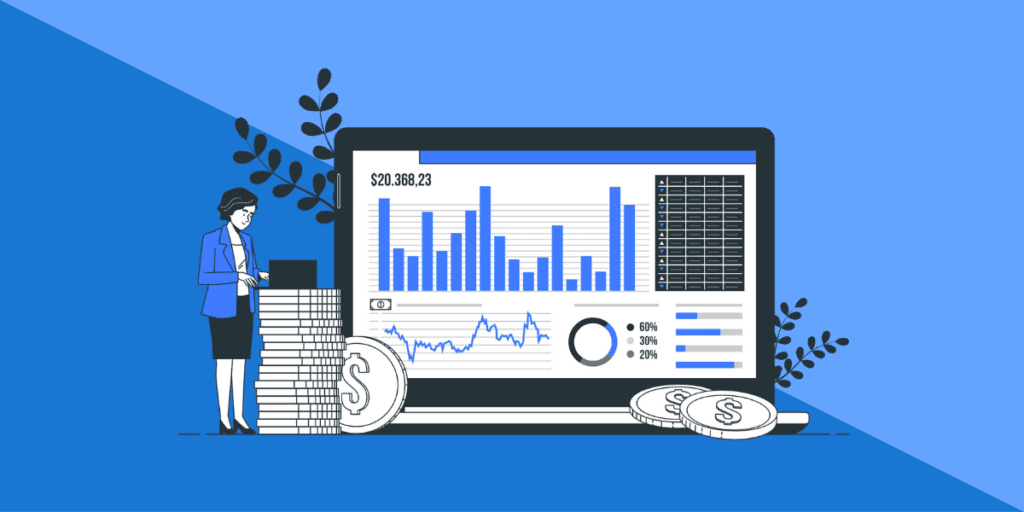Note: this cheat sheet is updated for the latest 2024’s curriculum.
Derivatives.
Perhaps no single word has a greater ability to strike fear in the hearts of CFA candidates. The readings on this topic are replete with graphs, formulas, all of which seem indecipherable, and gratuitous references to Greek letters.
However, it doesn’t need to be. In fact, it can be one of your strongest topics, as derivatives concepts are applicable to all 3 levels and don’t need memorization once you grasp the concept of how they work.
That’s why we have created our Cheat Sheet series of articles, which focuses on one specific topic area for one specific CFA Level. This cheat sheet focuses on CFA Level 1 derivatives. ☕
More Cheat Sheets will be published and continuously updated, sign up to our member’s list to be notified first.
By referring to the CFA Learning Outcome Statements (LOS), we prioritize and highlight the absolute key concepts and formula you need to know for each topic. With some tips at the end too!
Use the Cheat Sheets during your practice sessions to refresh your memory on important concepts.
Let’s learn this 🙂
- CFA Level 1 Derivatives: An Overview
- LM1: Derivative Instrument and Derivative Market Features
- LM2: Forward Commitment and Contingent Claim Features and Instruments
- LM3: Derivative Benefits, Risks, and Issuer and Investor Uses
- LM4: Arbitrage, Replication, and the Cost of Carry in Pricing Derivatives
- LM5: Pricing and Valuation of Forward Contracts and for an Underlying with Varying Maturities
- LM6: Pricing and Valuation of Futures Contracts
- LM7: Pricing and Valuation of Interest Rates and Other Swaps
- LM8: Pricing and Valuation of Options
- LM9: Option Replication Using Put–Call Parity
- LM10: Valuing a Derivative Using a One-Period Binomial Mode
- CFA Level 1 Derivatives Tips
CFA Level 1 Derivatives: An Overview

Similar to Alternative Investments, Derivatives is one of those topic that is worth mastering given its relatively light reading for its topic weight. At level 1, it is mostly introductory concepts, with particular attention needed on call and put options’ section, how they work and their payoff structure.
It is also present in all 3 levels of the CFA program, with a slight increase in topic weight for Level 2 and 3.
2023’s CFA Level 1 Derivatives’ topic weighting is 5-8%, which means 9-14 questions of the 180 questions of CFA Level 1 exam is centered around this topic.
It is covered in Topic 7 which contains 10 Learning Modules (LMs).
The Level 1 curriculum is structured to give us a basic conceptual understanding of derivatives, how to value them, and how they can be used to manage risk.
Here’s a summary of CFA Level 1 Derivatives chapter reading:
| Learning Module | Sub-topic | Description |
|---|---|---|
| 1 | Derivative Instrument and Derivative Market Features | A basic introduction to the derivative market and instrument. |
| 2 | Forward Commitment and Contingent Claim Features and Instruments | Covers the basic features and valuation of forwards, futures, swaps, options and credit derivatives. |
| 3 | Derivative Benefits, Risks, and Issuer and Investor Uses | Discusses the benefits and risks of using derivatives, and how issuers and investors use it. |
| 4 | Arbitrage, Replication, and the Cost of Carry in Pricing Derivatives | Explains the concept of arbitrage as the basis for derivative pricing. |
| 5 | Pricing and Valuation of Forward Contracts and for an Underlying with Varying Maturities | Explains how to price and value a forward contract at initiation, during the life and expiration. |
| 6 | Pricing and Valuation of Futures Contracts | Compare and contrast forward vs futures contracts. |
| 7 | Pricing and Valuation of Interest Rates and Other Swaps | Introduction to swaps and how to price them. |
| 8 | Pricing and Valuation of Options | Understand what factors affect the valuation of options. |
| 9 | Option Replication Using Put–Call Parity | Explain put-call parity and put-call forward parity for European options. |
| 10 | Valuing a Derivative Using a One-Period Binomial Model | Understand how to value a derivative with a one-period binomial model and the concept of risk neutrality. |
In a nutshell, the derivatives readings are about developing an understanding of what these instruments are, why you might want to use them, and what your net gain/loss would be over a range of possible outcomes.
Practically, derivatives are a useful risk management tool, which explains their growing popularity. So there’s a good chance that a better understanding of at least some parts of the derivatives material will be relevant to you job.

LM1: Derivative Instrument and Derivative Market Features
Derivative underlyings
- Equities
- Fixed income instruments
- Interest rates
- Currencies
- Commodities
- Credit
- Other (weather, crypto, longevity etc)
Exchange traded vs OTC derivatives
| Exchange-traded derivatives | Over the counter (OTC) derivatives |
|---|---|
| Standardized | Customized |
| Higher liquidity | Lower liquidity |
| Lower trading costs | Higher trading costs |
| Less flexible | Flexible |
| More transparency | Private |
| Highly regulated | Less regulated |
| Lower counterparty risk. Margin required, less risk of default | Higher counterparty risk. Margin sometimes required, greater risk of default |
| E.g. futures and options | E.g. forwards and swaps |
LM2: Forward Commitment and Contingent Claim Features and Instruments
Options (calls and puts)
- Option styles:
- European options can only be exercised at expiration.
- American options can be exercised anytime during the life of the option.
- Thus, American options are more valuable than equivalent European options because it can be exercised anytime up to expiration.
- American call option prices can differ from European call’s prices only if there are interim cashflows on the underlying asset, e.g. dividend or interest. These early cashflows are the only reason for an early exercise of a call.
- American put option prices can differ from European put’s prices because the right to exercise early is valuable for puts. If the underlying stock pays a dividend, the put option holder should wait until expiration to exercise the option to ensure receipt of stock dividends as well.
- Intrinsic value of European options:
- European call = Max [0, ST – X]
- European put = Max [0, X – ST]
- Call option buyer and seller profit at expiration:
- Call option buyer profit = Max [0, ST – X] – c0 , where c0 = option premium.
- Call option seller profit = c0 – Max [0, ST – X]
- Put option buyer and seller payoff at expiration:
- Put option buyer profit = Max [0, X – ST] – p0 , where p0 = option premium.
- Put option seller profit = p0 – Max [0, X – ST]
LM3: Derivative Benefits, Risks, and Issuer and Investor Uses
| Benefits of derivatives | Description |
|---|---|
| Risk allocation, transfer and management | manage underlying exposure without trading the underlying. |
| Information discovery | deliver expected price in the future and manage the expected risk of the underlying. |
| Market efficiency | ability to arbitrage on mispricings cost effectively |
| Operational advantages | lower transaction costs vs. the underlying, ability to short, reduced cash outlay and increased liquidity |
| Risks of derivatives | Description |
|---|---|
| Higher potential of speculation | The high degrees of leverage in some derivative strategies may create higher risks of financial distress. |
| Lack of transparency | Complex derivative portfolios may create exposures that investors don’t understand. |
| Basis risk | The potential risk that arises from mismatches in the underlying value of the derivative position vs an underlying or hedged position. |
| Liquidity risk | The potential risk that arises from mismatches in the cashflow timing of the derivative position vs an underlying or hedged position. |
| Counterparty risk | The risk that the counterparty to a transaction could default before the final settlement of the transaction’s cash flows. |
| Systemic risk | Excessive leverage or risk taking in derivatives markets can cause financial market stresses. |
Issuers use derivatives to perform:
- cash flow hedge
- fair value hedge
- net investment hedge
LM4: Arbitrage, Replication, and the Cost of Carry in Pricing Derivatives
No arbitrage forward price with benefits/income (I) and costs (C)
For annual compounding: F0(T) = [S0 + PV0(C) − PV0(I)](1 + r)T
For continuous compounding: F0(T) = S0e(r+c-i)T
No arbitrage currency forward price
Foreign exchange is a special case whereby the cost of carry is the interest rate differential between the foreign and domestic risk free rates (rf-rd).
F0(T) = S0e(rf-rd)T

LM5: Pricing and Valuation of Forward Contracts and for an Underlying with Varying Maturities
Forward commitments
- A forward contract is an OTC derivative contract where 2 parties agree to exchange a specific quantity of asset for a fixed price at a future date.
- Value of T-year forward contract (for a long position) at:
| Initiation | V0(T) = 0, because neither party pays any money to the other. |
| Expiration | VT(T) = ST – F0(T) |
| Time t | Vt(T) = St – PVt(I) + PVt(C) – [F0(T)/(1+r)T-t] |
- Forward price of an asset, F0 = S0 (1+r)T – FVT(benefit) + FVT(cost)
Foreign exchange forwards
Valuation at initiation: F0(T) = S0e(rf-rd)T
Valuation during the life of the contract: Vt(T) = St – (F0(T))/e(rf-rd)(T-t)
Interest rate forwards
- Forward contracts which have an interest rate (not an asset) as an underlying are called Forward Rate Agreements (FRAs).
- FRAs allow us to lock in an interest rate today for a loan in the future to hedge against interest rate risk.
- If reference rate > FRA rate at expiration, the long benefits.
- If reference rate < FRA rate at expiration, the short benefits.
Implied forward rate (IFR):
IFR_{A,B-A}=\bigg\lbrack\frac{(1+z_B)^B}{(1+z_A)^A}\bigg\rbrack^\frac{1}{B-A} - 1LM6: Pricing and Valuation of Futures Contracts
Forward price vs. futures price
- Futures is similar to forward contract except it is standardized, exchange-traded, regulated, marked-to-market and settled daily, with a clearinghouse guarantee.
- Forwards vs. futures prices:
- If futures price positively (negatively) correlates with interest rates, futures price would be higher (lower) than forward’s price because there are intermediate cash flows on which interest can be earned on.
- If interest rates are constant or have no correlation with futures prices, then futures and forward prices would be the same.
LM7: Pricing and Valuation of Interest Rates and Other Swaps
Interest rate swaps
- The value of a swap at initiation is usually 0.
- If interest rate increases (decreases) after swap initiation, the swap would have a positive value for fixed-rate payer (floating-rate payer).
- An interest rate swap can be viewed as a series of combined FRAs.

LM8: Pricing and Valuation of Options
Moneyness of an option
| Option moneyness | Call option | Put option |
|---|---|---|
| In-the-money (ITM) | St > X | St < X |
| At-the-money (ATM) | St = X | St = X |
| Out-of-the-money (OTM) | St < X | St > X |
Factors impacting the value of an option
| Impact of increase in: | Call option value | Put option value |
|---|---|---|
| Value of underlying | Increase | Decrease |
| Exercise price | Decrease | Increase |
| Risk-free rate | Increase | Decrease |
| Time to expiration | Increase | Increase (except for deep in-the-money European puts) |
| Volatility of underlying | Increase | Increase |
| Benefits of underlying | Decrease | Increase |
| Cost of carry | Increase | Decrease |
LM9: Option Replication Using Put–Call Parity
Put-call parity for European options
Fiduciary call = protective put
c0 + X/(1+r)T = p0 + s0
Put-call forward parity for European options
c0 + X/(1+r)T = p0 + F0(T)/(1+r)T
LM10: Valuing a Derivative Using a One-Period Binomial Mode
Binomial valuation
Hedging portfolio: V0 = hS0 – c0
Hedge \space ratio, h=\frac{c^u_1-c^d_1}{s^u_1-s^d_1}Risk neutrality
Risk neutral probabilities:
\pi=\frac{1+r-d}{u-d}Risk-neutral probability-weighted call price:
c_0=\frac{\pi c^u_1+(1-\pi)c^d_1}{(1+r)^T}CFA Level 1 Derivatives Tips

There is a good chance that the majority of exam questions on this topic will be qualitative, so your focus when studying the Level 1 derivatives material should be on grasping concepts rather than committing formulas to memory and then working them through.
Once you have a solid command of the rationale for using various derivatives, the formulae will come to you on the basis of logic and understanding rather than on the basis of rote memorization.
That may sound like a poor attempt at finding Zen in a most un-Zen-like topic, but it really does help to take a step back and look at the material in these readings fits into the bigger picture of the CFA curriculum.
Here are two examples, one qualitative and one quantitative, of questions that are representative of what you can expect to see on exam day.
Qualitative example:
A fiduciary call strategy most likely involves establishing a:
A. long position in a risk-free bond.
B. long position in the underlying asset.
C. short position in a call option contract.
Choice A is the correct answer because a fiduciary call strategy is executed by taking a long position in a call option contract and lending at the risk-free rate (or taking a long position in a risk-free bond).
According to put-call parity, a fiduciary call strategy provides equivalent payoffs to a protective put strategy, which is executed by combining a long position in an underlying asset with a long position in a put option contract based on that asset.
Quantitative example:
An investor who holds 100 shares of ABC stock, which currently trades at $15.50 per share, decides to implement a covered call strategy using a call option contract that grant the long party the right to purchase 100 shares of ABC for $16.00 per share. This contract is priced at $1.50 per share. If ABC shares are trading for $17.00 at the time the contract expires, the payoff to this covered call strategy on a per share basis is closest to:
A. $1.00.
B. $2.00.
C. $3.00.
Choice B is the correct answer because a covered call strategy is executed by taking a long position in an underlying asset and a short position in a call option contract based on that asset.
The formula for calculating payoff for a covered call is as follows:
Π = ST – S0 – max(0,ST – X) + c0
where
Π = profit from covered call strategy
ST = price of the underlying asset at time T
S0 = price of the underlying asset at time 0
X = call option exercise price
c0 = call option price at time 0In this example,
Π = $17.00 – $15.50 – max(0,$17.00 – $16.00) + $1.50
= $17.00 – $15.50 – $1.00 + $1.50
= $2.00
Choice A is incorrect because it assumes that the investor has gained $1.50 from the appreciation of the underlying asset, but suffered a net loss of $0.50 by taking a long call position when a covered call strategy requires a short call position.
Choice C is incorrect because it fails to account for the fact that the investor suffered a loss of $1.00 as a result of having taken a short call position.
More Cheat Sheet articles will be published and updated continuously. Get ahead of other CFA candidates by signing up to our member’s list to get notified.
Meanwhile, here are other related articles that may be of interest:
- CFA Level 1 Cheat Sheets series: Quant Methods | Economics | Corporate Issuers | Fixed Income | FRA | Equity Investments | Ethics | Alt Investments | Portfolio Management
- CFA Level 1: How to Prepare and Pass CFA in 18 Months
- CFA Level 1 Tips: Top 10 Advice from Previous Candidates
- What Is the Best CFA Level 1 Topic Study Order?
- 18 Actionable Ways to Improve Your Study Memory
- How to Study Effectively: Proven Methods that Work for CFA, FRM and CAIA
- The Ultimate Guide to CFA Practice Questions

Thank you for the cheatsheets. They are very helpful. You guys do a really good job with the tables. The tables provide a very nice informative view of different concepts. My only critique is there aren’t enough pictures to illustrate certain concepts.
Hi Brian, appreciate the feedback, and good points of pictures, as I personally found the ‘hockey stick’ graphs for options essential to grasp the key concepts. Will see what we can do to illustrate those better in the next iteration of updates.
These cheat sheets all used to have textbook recommendations. Options, Futures, and Other Derivatives by John Hull was recommended before, for this section. Now only the Fixed Income cheat sheet has a book recommendation. What’s the reasoning behind these changes? Thanks!
Hi Stan, we thought we should focus on the curriculum and summarize the key items you should know, rather than send readers off to another book that may take up more time. But yes, John Hull’s book is the definitive book on derivatives that can be used as a reference here 🙂
Thanks for your reply, Sophie! I think the textbook recommendations were great for people who didn’t major in business or finance in college. Reading Kaplan Schweser is not the same–it doesn’t explain things as thoroughly.
Fair enough! We will definitely include a selection of references in the next update, appreciate your feedback Stan and glad you’re finding it useful.
These cheat sheets are great, but please can you add a print-friendly .pdf version. No unnecessary images, etc.
We’re working through all the Cheat Sheets, and will let you know if we decide to publish one!